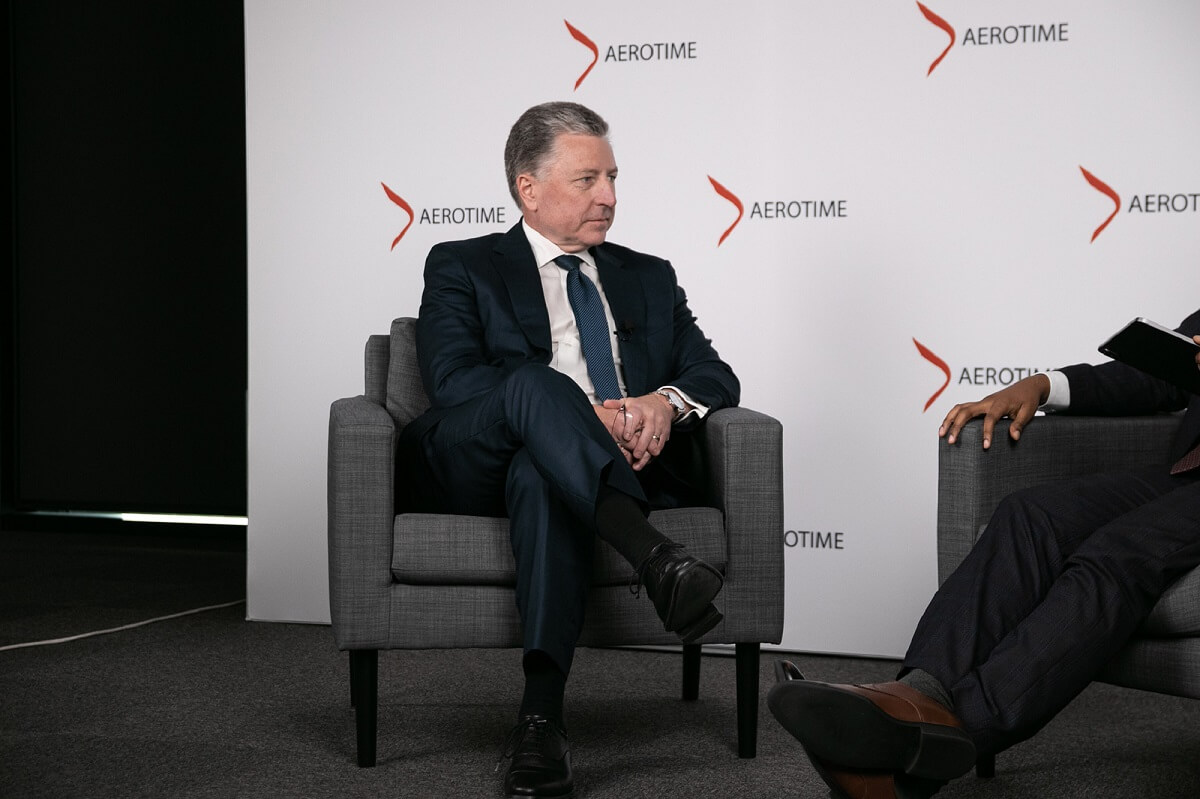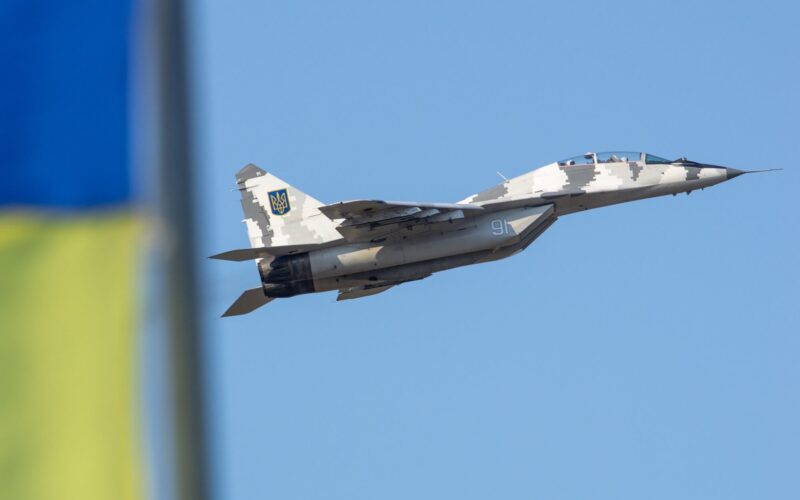In the initial phases of Russia’s invasion of Ukraine, aerial warfare was rapidly overlooked. The Ukrainian Air Force did not have the capacity to pose a threat to Russia’s advance. And since it failed to completely neutralize Ukraine’s air defense systems and establish air supremacy, the Russian Air Force has persisted in using its combat aircraft the way its strategy and doctrine prescribe: as airborne artillery.
Eight months into the war, however, the situation in the air is once again at the center of attention. On October 10, 2022, Russia launched its largest strike on Ukrainian cities in recent months, targeting civilian infrastructure. Some 75 cruise missiles, mainly Kalibr missiles, were launched by the Russian military on the first day, in addition to Iranian-made Shahed-136 suicide drones.
Consequently, Ukraine and its western allies made it a priority to provide the country with sufficient means to defend its airspace and to destroy threats from above.
In this context, AeroTime sat down with Kurt Volker, a former US Ambassador to NATO and former US Special Representative for Ukraine, to better understand what led to the current situation in the skies above Ukraine, the needs of its air force, and what to expect in the coming months.

Find the full video interview at the bottom of this article.
The war in Ukraine was prolonged beyond anyone’s expectations. Could you tell us the current state of the war and where things are today?
The state of the war went through a few phases. The first one was Russia launching this “blitzkrieg”, if you will, trying to decapitate the government and take over Ukraine very quickly. Utter failure. They were poorly led, poorly planned, poorly supplied, and poorly trained. The soldiers didn’t even know where they were when they were captured by the Ukrainians. It was a complete mess in the first phase, and Ukrainians let them run out of supplies first, get stuck on the roads, and then gradually moved to push them out.
In the second phase, the Russians tried to get into some kind of artillery war, a war of attrition on the front lines in eastern Ukraine. And the Ukrainians were very smart about that as well. They allowed the Russians to fight and fight and fight, and exhaust themselves while giving up just a little bit of territory
And then part three, they went on the counter-offensive. And Ukrainians now have better personnel, better trained, more numerous, with better equipment, including a lot of provisions from the United States and other countries, better led, better command and control. Meanwhile, the Russians are demoralized. They’ve had significant casualties. So they’re trying to fill gaps in the units. They went through this mass conscription, which is just dragging people off the streets, quite literally, who have no training experience in the military and no motivation. They’ve lost about half the conventional equipment that they had when they started the war. They don’t have enough kits for the individual soldiers, just uniforms and flak jackets. So they are gradually losing.
They’re falling back in Kherson province now. And before the winter, I think Ukrainians will make another significant set of territorial callbacks, to take more of their territory back. And then the winter is going to be very hard for the Russian forces because the Ukrainians are doing an excellent job knocking out the logistics. So, as you know from the aviation industry, logistics is really everything. It’s how you move goods and people and supplies and ammunition and fuel, and the Russians are losing their ability to do this.
How has the prolonged war changed the US and Europe’s perspective on defending Europe’s airspace?
First off, it was a mistake and remains a mistake on our part to allow the Russians to close Ukrainian airspace. Ukraine is a sovereign country, and we have not challenged Russia as they fire missiles and airplanes and so forth. In Ukrainian airspace, we should not have done that. Right now, there is no appetite for preventing Russia from doing that. This airspace will remain closed for some time.
It is an eye-opener, or a wake-up call, if you will, for European countries of the importance of protecting airspace. And what we’ve seen NATO do, for instance, was to reinforce the air policing visions, for instance, here in the Baltic states, and to move more forces further forward in NATO states to make sure that all aspects of the security of each country are covered. So, the awareness is much higher.
We are now at a phase, finally, where we are providing Ukraine with more serious air defense systems, which will allow them to protect their airspace better. And I would say we’re probably a few weeks away from seeing them gain real control over that airspace and prevent attacks against cities. And when that happens, I hope that we start talking about opening at least a portion of Ukraine’s airspace for flights in and out again.
You served as the Special Representative of the US government for Ukraine between 2017 and 2019, which must have been critical in setting up the air defense of Ukraine. How did the US and NATO prepare the Ukrainian Air Force and Air Defense in the years that preceded the war?
We did not do anywhere near enough for the Air Force. If you remember, from 2014, when Russia invaded Crimea and Donbas all the way through 2016, President Obama had a ban on sales of lethal defensive arms to Ukraine. So we would provide night vision goggles, blankets and MREs [Meal, Ready-to-Eat, the US military food rations]. But we were not doing any real serious defense support. We were bringing them for training in the US, but not really marrying them up with equipment and helping Ukrainians with it.
It was a mistake on our part to allow the Russians to close Ukrainian airspace
Starting in 2017, and this was part of what I was involved with, we pushed very hard to lift this arms embargo on Ukraine. We managed in the fall of 2017 to get the US administration of President Trump to decide to provide Javelin anti-tank systems. This was the first crack of opening the door for lethal defensive arms for Ukraine.
This broke the precedent so that other types of lethal defensive arms started coming in. The French provided military helicopters. We provided anti-sniper systems, which are systems that calibrate where sniper fire is coming from and allow them to fire back. Most of what we did was focused on the ground forces, and we gave them some retired coast guard vessels for the Ukrainian Navy.
For the Air Force, it was mostly about training. I look at that with some regret, because we should have done more for air defense, even back then. And once this phase of the war started in February, a number of us, General Phil Breedlove, who was a former Supreme Allied Commander Europe, but also an Air Force officer, and General Wes Clarke and General Ben Hodges, myself, and a few other former ambassadors, we argued specifically for more support for the Air Force, giving them some retired US equipment like A-10s, and more air defenses. And it has taken us to where we are in October, and we’re still catching up with that.
The West was initially reluctant to provide western aircraft because it would have taken “months” to train Ukrainian pilots. Eight months later, we see a different narrative, as Ukrainian service members are being trained to use heavy weaponry in several western countries. What is your take on the supply of fighter jets to Ukraine? Can we expect western aircraft to be delivered if the war drags on?
Let me first address the training point and then come to the fighter aircraft, because my perception is that we have used the duration of training as an excuse.
Ukrainians have fighter pilots, they have people who drive tanks, and people who work artillery systems, and they already know how to do it on their own former Soviet equipment. And it’s not that big a deal to adapt to a different airframe or a different tank. It requires some training, but you’re not talking months and months and months. The Ukrainians are very astute.
Secondly, we need to be on a war footing here. Ukraine is fighting for its survival. We shouldn’t be saying, “Oh, but you can’t fight to survive until after you go through three months of training.” That doesn’t make a lot of sense. We have overestimated that, and I think we were using it as an excuse. We have begun to relax a little bit.
We have used the duration of training as an excuse
As to where we are now on the air forces, you will remember back in March, the Poles were ready to give MiG-29 aircraft to Ukraine, and the US was going to backfill them with US aircraft in Poland, which would create a pathway for Poland to then acquire more US aircraft. Very good policy, very sensible. Secretary of State Blinken announced this when he was in Poland, visiting the Polish government, Ukrainian refugees, and the Ukrainian government. It got blocked within the administration after that, and we never followed through.
Now we are back at a stage where that is on the table again. And it’s MiG-29s, also Sukhois, and it is Poland, Slovakia, and Romania, where people were talking about this. I expect this will now happen.
- Poland says NATO must act together to send MiG-29s to Ukraine
- Czech, Polish jets to protect Slovakia amid possible transfer of MiGs to Ukraine
- Pentagon says Ukraine given new aircraft, UAF refers to spare parts, components
The second thing is US aircraft or Western aircraft, and the most important one here is the F-16. We have already begun training Ukrainian pilots on the F-16 system. The expectation in Washington is that the war will be over before any F-16 are transferred to Ukraine, and they’re able to integrate them into their air force. How this all plays out still remains to be seen. But the openness is there.
And then the final one, the A-10 aircraft. That’s a ground attack aircraft that is particularly good at anti-tank and anti-armored columns. We had already trained six Ukrainian pilots to fly these aircraft in Arizona over the past couple of years. It would be a matter of taking them out of storage and giving them to the Ukrainians, and then making sure they got the associated equipment, the logistical support parts maintenance, and ammunition to go with it, so that they would be able to use them effectively. Pilots have told me that they are very simple aircraft to fly. And it’s really the weapon systems that require the most attention.
That does not seem to be on the table at the moment. But I think it’s one that we also need to keep bringing up. Because if you can’t control the skies, then there’s always a risk that the Russians continue to make progress on the ground. We should be giving the Ukrainians as much of a 360 capability as we can.
Watch the rest of the interview here:

